We may not have the course you’re looking for. If you enquire or give us a call on +44 1344 203999 and speak to our training experts, we may still be able to help with your training requirements.
Training Outcomes Within Your Budget!
We ensure quality, budget-alignment, and timely delivery by our expert instructors.
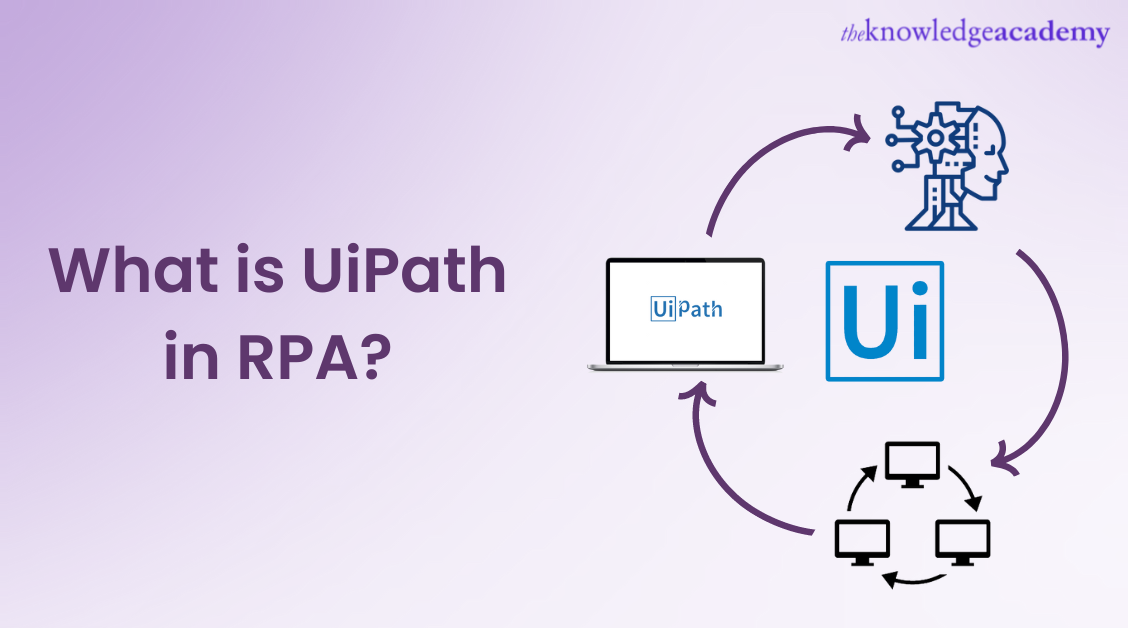
UiPath is one of the most popular Robotic Process Automation (RPA) tools whose success over time allowed its integration across various enterprises. Its affordability has made it one of the most popular RPA tools, as it makes RPA accessible for small and medium-scale businesses. RPA UiPath is one of the popular functions of automation technology.
According to Statista, UiPath made over £733.87 million in 2022. Check out this blog to learn more about RPA UiPath software, which helps you deploy, manage, and monitor the process in UiPath and offers free and open training services.
Table of Contents
1) What is RPA UiPath anyway?
2) Architecture of UiPath
3) UiPath's Project Templates
4) How can you install UiPath?
5) Conclusion
What is RPA UiPath anyway?
Let's start with what RPA is and why it is used. RPA or Robotic Process Automation are technologies commanded and programmed to replicate human actions. These actions are generally repetitive, menial and redundant. Humans normally perform these actions, but their tiresome nature makes them liable to error.
RPA can significantly benefit you in these circumstances due to its mechanical consistency. A machine has no such weakness where a human can feel bored or disinterested in a task. The RPA software technologies used to perform a task are called robots, and these robots can endlessly replicate a human action taught to them.
RPA requires platforms to integrate properly into a business environment. UiPath is one such vendor, providing an RPA automation tool of the same name. This RPA tool eliminates the possibility of human error within a work that requires endless consistency. UiPath achieves this with its convenient drag-and-drop interface, allowing for easy automation of work.
UiPath also has an active community filled with many people using the tool in different fields. This allows you to seek help from a community that might be well-versed with your issues, having experienced them beforehand. UiPath was able to gather such a strong community due to its list of features.
Some feature that makes UiPath so popular is Scalability, allowing it to mature and grow with your business. UiPath's easy deployment, highly secure nature, efficient robots and robust architecture make it a great choice for corporates from different fields. Additionally, UiPath can also integrate intel, such as Machine Learning, in its automation for intelligent automation.
The working environment of your staff can be improved drastically with RPA, as it will reduce menial tasks for them. An example would be customer support services using chatbots, which promise better customer feedback. Such features have made UiPath a popular automation tool with large-scale organisations such as AUTODESK and NASA.
Architecture of UiPath
Any well-designed software has proper architecture, and UiPath's Robotic Process Automation is no exception. At its core, UiPath has three important components that form the structure of its RPA. Let's understand these components of RPA Architecture in UiPath.
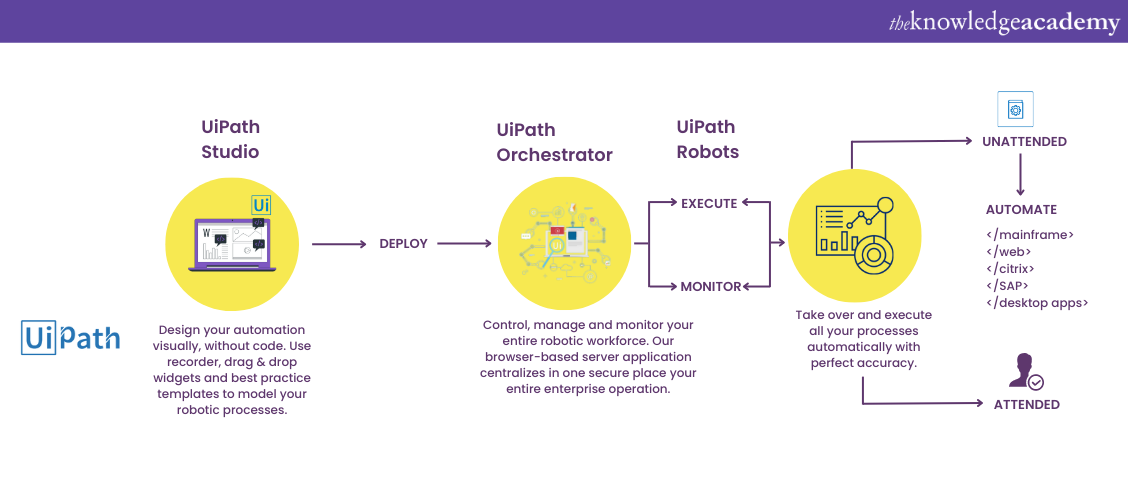
UiPath Studio
It is the visual part of UiPath that allows you to design automation. UiPath Studio is very convenient due to its drag-and-drop feature, simplifying the automation process. UiPath studio is divided into four parts used for designing the automated process, which a robot later follows.
1) Ribbon Pane: It generally contains three tabs - start tap, design tap and execute tab. These are used to redirect you to your home screen, perform editorial functions, and launch your work.
2) Activity Pane: This pane contains User Event, System, Programming, Application Integration, Orchestrator, UI Automation and the workflow.
3) Properties Pane: This pane is used in the UiPath studio to verify the coordination between two or more activities. This allows for better workflow and property configuration in UiPath.
4) Output Pane: This pane is used to view the output of your work. This pane acts as feedback by giving you a notification that denotes the end or start of a project.
UiPath Robot
The term robot might bring memories of a humanoid metallic entity, but it is not true with UiPath. The term "robot" in UiPath, refers to an entity capable of performing simple tasks specified to it in UiPath studio. To ensure your robot can execute the tasks given in UiPath studio, you must enable its running state.
UiPath Orchestrator
Orchestrator in UiPath works similarly to a reminder, reminding you of a task based on how it was set. It is a web application capable of scheduling, monitoring and deploying robots and processes. By publishing your projects, you can use this to make sure the automation is versatile and works on multiple systems.
UiPath's Project Templates
Using UiPath for RPA allows you to use default templates which can serve as a great guideline for newcomers. Additionally, these templates will help you by enhancing your productivity and efficiency. They allow you to directly implement these templates and get to work rather than creating them from scratch. Each of these templates has its different uses. Let's understand these templates.
1) Background process template: This process allows you to perform two tasks simultaneously, running them in parallel. It can be created by selecting the background process in the home backstage view of the studio. Click Create after filling in the necessary fields.
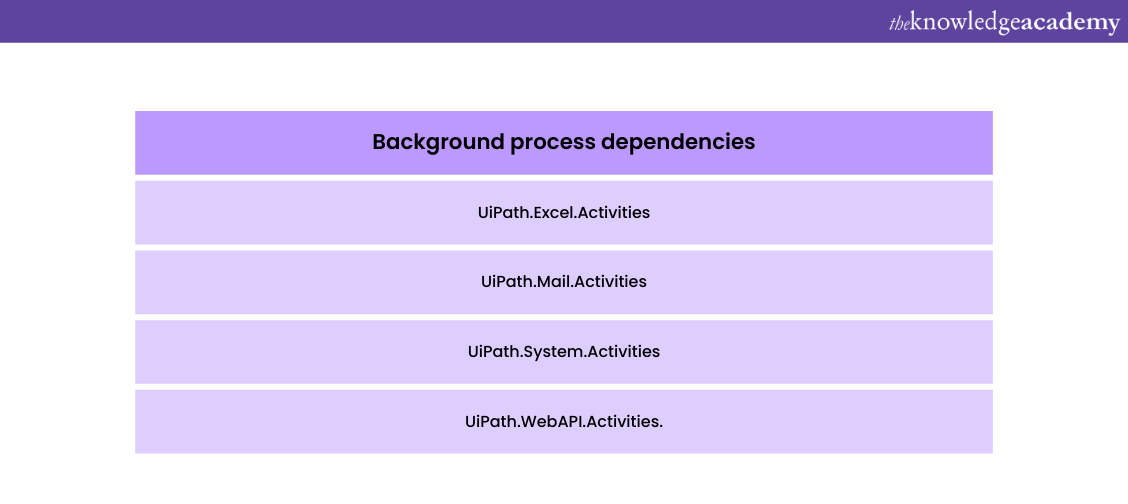
2) Orchestration Process template: It is used for workflows that work for long periods without human attention. It can be accessed by selecting the orchestration process in the home backstage view of the studio. Click Create after filling in the necessary fields.
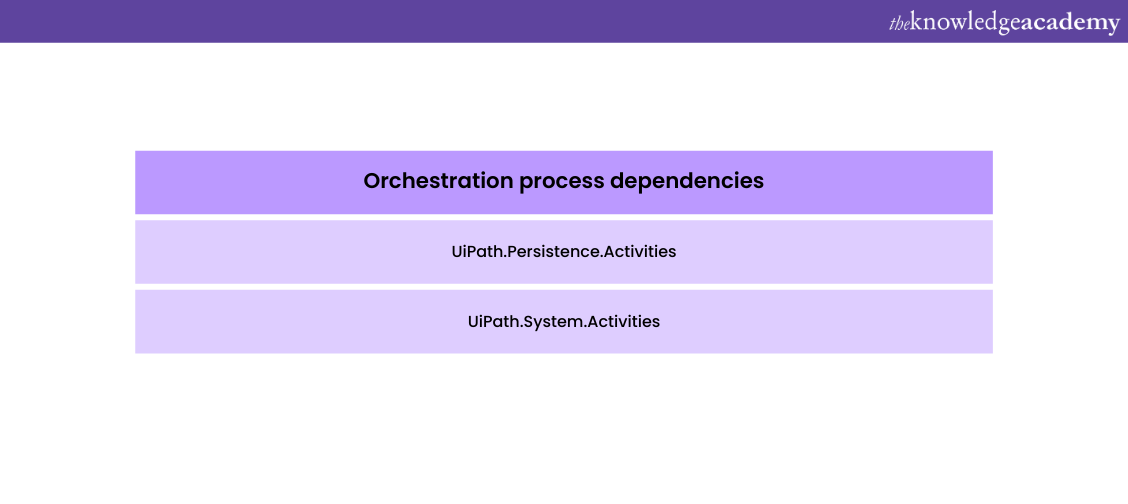
3) Robotic enterprise framework: This template contains pre-existing containers that perform data retrieval, processing and application initialisation tasks. This template is most frequently used for large-scale business deployment.
4) Trigger-based attended automation template: A template used to trigger automation in UiPath based on response to mouse clicks or keyboard inputs.
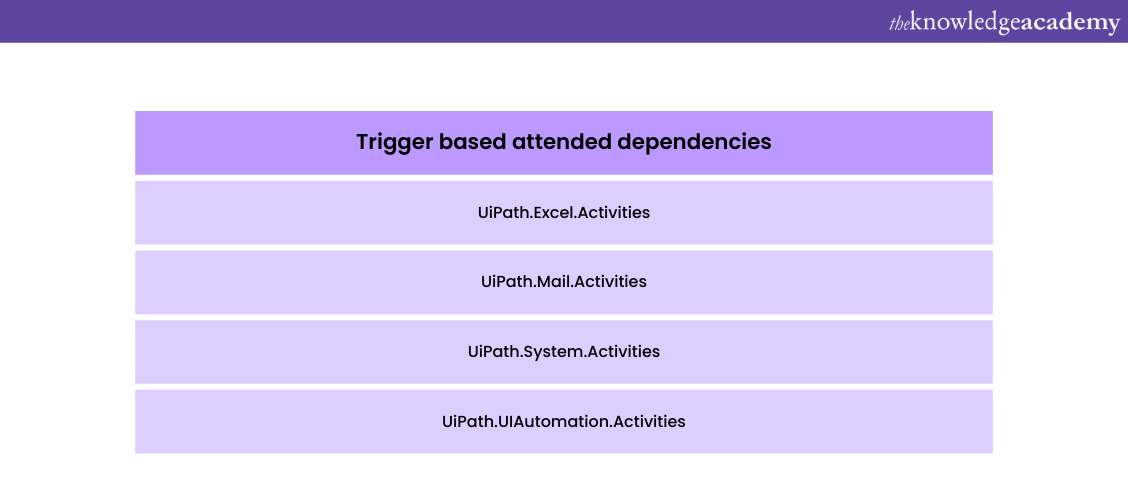
5) Transaction process: A well-optimised template based on the usage of flow charts.
Build intelligent automation with our course in Machine Learning Training!
How can you install UiPath?
If you feel redundant tasks in your business environment are eating away at your staff's productivity, you may benefit from UiPath. There are certain steps to follow when integrating a UiPath RPA model. Such factors might be the edition of the UiPath, its prerequisites, and the installation process itself, so let's go through them.
Prerequisites of UiPath
Here are certain attributes your system needs to have to run a UiPath automation tool. You might be able to install the tool regardless, but in the lack of its basic requirements, the Robotic Process Automation tool won't function properly.
1) Operating System: UiPath only works in Windows Operating System (OS) with Windows 7, 8 or later versions. This means MacOS and Linux users might not be able to receive the benefits of UiPath.
2) Memory: UiPath requires 8 GB of Random Access Memory (RAM) to work properly.
3) Framework: UiPath needs a .NET framework to work and run on your system.
4) Web Browser: Most web browsers, such as Google Chrome, Microsoft Edge, Mozilla Firefox and Safari, support UiPath in their latest editions.
Build intelligent automation with our course in Artificial Intelligence & Machine Learning!
Choosing the right UiPath edition
a) Community Edition: It is the free edition of UiPath, which is available for most users. If you are a novice to RPA, this would be your best choice, and independent RPA developers frequently use it.
b) Studio Edition: It is the premium edition of the UiPath, commonly used by developers. It has the benefits of possessing a license and features unavailable in the community edition of UiPath.
c) Enterprise Cloud Edition: Enterprise Cloud significantly differs from the previous two editions. This edition of UiPath has larger capabilities with features like Orchestrator, Studio and Robots. This edition of the RPA platform is cloud-based, allowing it to perform far more complex tasks.
d) Enterprise Server Edition: This is the most powerful edition of UiPath that comes with ten licenses. It is essentially the enterprise cloud edition of UiPath with an entire server dedicated to Automation with a self-managing update feature.
Installation process
After meeting all the prerequisites and choosing the right edition, you can move on to Installation. Using the link, you will be directed to the account creation page of UiPath. From this point onwards, you are free to sign in using your preferred choice, although creating an account is recommended.
You can also sign in with your pre-existing accounts, such as Google and Facebook. Although which edition you choose is entirely up to you, you are strongly suggested to use the community edition as a beginner. This will allow you to learn the process before dwelling on the premium features of the UiPath.
Conclusion
UiPath allows you to automate tiresome and redundant tasks with great ease. UiPath was responsible for Robotic Process Automation's popularity with medium and small scaled enterprises. With this blog, you now have a deeper understanding of what is UiPath RPA and its significance. Hopefully, you better understand the prerequisites for RPA UiPath and its installation process. Thank you for reading.
Fascinated by RPA? Try our Microsoft Power Automate RPA Developer PL500 course!
Frequently Asked Questions
Upcoming Business Analysis Resources Batches & Dates
Date
 Robotic Process Automation using UiPath
Robotic Process Automation using UiPath
Thu 25th Jul 2024
Thu 10th Oct 2024









 Top Rated Course
Top Rated Course



 If you wish to make any changes to your course, please
If you wish to make any changes to your course, please


